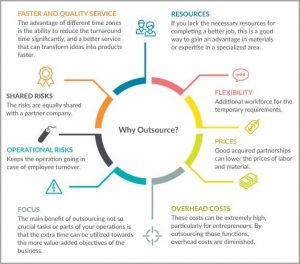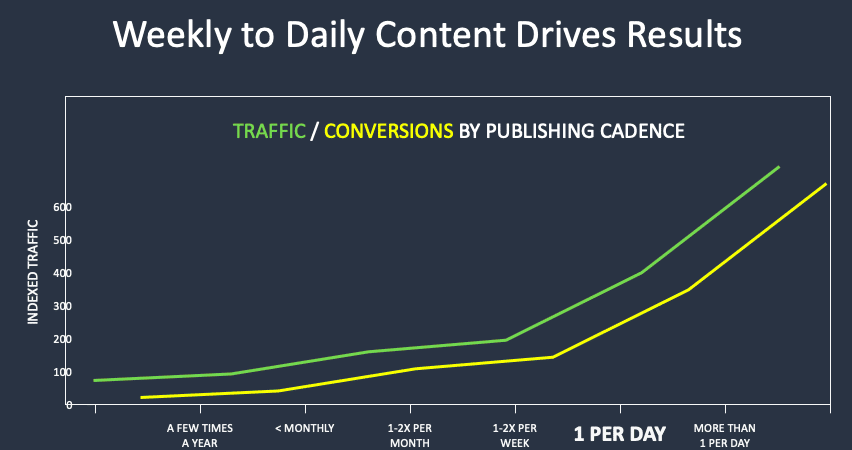
Are you looking to take the next step in your marketing career? You’re not alone. A 2021 survey by Oracle states that 75% of employees feel personally and professionally stuck.
According to Google search trends, professionals are looking to grow their careers at an all-time high. As companies downsize due to facing this challenging economy we are in; it’s the perfect time to set yourself up to stand out.
If you are feeling stagnant in your career, ask yourself these two questions:
- What is my mission statement?
- What are my core beliefs that breed success?
Many people answer with their organization’s core values or mission statement. It’s written on the walls of our offices, the company mugs we drink our coffee from, and is reiterated by leadership at meetings.
To clarify, I’m not asking for your organization’s beliefs. I am asking for yours. Let’s face it; organizations have these repeated everywhere for a reason. They create unity, purpose, and sustainable growth, which collectively breed success. Successful organizations have a core set of beliefs that they reference day in and day out. There are valuable articles on how to craft a content marketing mission statement. There are fewer articles on how to craft your personal mission statement.
Since this is a foundational piece in the success formula for many organizations, shouldn’t it be for your business (your career)?
How these tips helped me:
The below tips were heavily influenced by my mentors, peers, and experiences and helped my career grow from an entry-level role to an executive leadership position, leading a $400MM advertising budget. I’ve been blessed with my fair share of “right place, right time” moments and have made the most of these moments by applying these six beliefs.
In 2012, I was working at a small, three-person marketing agency. We had a handful of clients, and I had the opportunity of being the jack of all trades. Content, website, client pitches, paid advertising, SEO, you name it. The cons? We worked out of Panera as we didn’t have an office space. The pros? I had the opportunity to learn from the founder, a former VP of a nationally known brand. Amazing opportunity.
I then moved into a Finance role at a Fortune 200 where I felt like a number. I remember walking through the cubicle farm and seeing a small picture frame in one of the cubicles. It read, “Thank you for your 15 years of service”. I moved on from that company very shortly after. I needed a different opportunity but knew it was in the middle. Larger than the agency, smaller than a Fortune 200.
I then found my Goldilocks – it had the stability that a startup couldn’t offer but also came with career visibility that a Fortune 200 couldn’t provide. The best of both worlds.
- That year we did $35 million in sales.
- Fast forward 6 years, and we surpassed $1 billion in sales.
I joined a company with a great product, great people, and a hungry leadership team. That is “right place, right time.” Pair that with the below six beliefs, and anything is possible.
6 Tips to Grow Your Marketing Career:
- Focus on Learning Something Each Day
- Focus on Tangible Results First
- The Power of Positivity is Real
- Always Assume the Best Intent
- Focus on the Outcome, not the Process
- Make Yourself Replaceable (yes, seriously)
Tip #1: Focus on Learning Something Each Day
At the end of every day, write down something you learned. Periodically look back on these learnings. Don’t force yourself to learn the same thing twice.
Content is king. Not only in the business world but also in our careers (plus, we’re marketers – the power of content is nothing we are strangers to). We have more thoughts than we know each day, and whether you realize it or not, you did learn something.
It’s not always going to be earth-shattering (believe me, there are days that I learned that I was not productive that day because I didn’t eat breakfast). Not every day is a breakthrough “shout it from the rooftop” type of learning.
Other days are the opposite – days where I realize that if I had taken a slightly different approach, the idea would have had the excitement it needed to take off.
In the end, don’t force yourself to learn the hard way. Make this learning a daily habit, and you will set yourself up to be one step ahead.
TL;DR: each night, force yourself to write down something you learned that day.
Tip #2: Focus on Tangible Results First
Ask your leadership what you can do to help – you’d be surprised at how little they’re being asked.
After leading a team of 100+ marketers over the last several years, you’d be surprised how few people ask, “what can I do to help”. Assembly line worker syndrome (I may have made this term up, but for anyone who has not worked on an assembly line, it’s the “not my job until it gets to me” syndrome) has become a habit with the increasing use of project management tools. So often, I have seen people check off that last task in a project and feel they’ve quite literally completed their job for the day. When you check that final task off your list, ask your leader about their biggest short-term challenge. Take some time to think about it and come back to them with some ideas.
Additionally, remember the bigger picture. Depending on the organization you work for, while you may not feel it each day, you are actively making a measurable difference. Remember that and use it for encouragement. You may not know it, but the work you are doing each day may be the difference between someone’s child being able to attend the paid field trip or someone’s child being able to participate in dance class that year.
TL;DR: Ask what you can do to help – you’d be surprised how rare leaders are asked this question, and remember the difference you can make.
Tip #3: The Power of Positivity is Real
Be the person who wants to go to work each day.
“Is it Friday yet?” – you hear it every week. In some organizations, you hear it on Tuesday (ouch). The best jobs are where you work with a group of people who genuinely want to go to work each day. Remember that no matter your role, there is no organizational chart for smiling. A small smile may cascade across your group, which will flow into other groups.
TL;DR: Negativity kills; positivity thrives. Be the difference maker.
Tip #4: Always Assume Best Intent
Before interpreting the tone through text, pick up the phone and make the call.
We’ve all been there. The snarky email, the short text, you name it. Before jumping to conclusions, pick up the phone and call (or video chat) your colleague. Keep it short; ask them to clarify what they’re saying. Doing so will allow you to determine the tone without being forced to read into it.
Remember, people have bad days, and it’s always better to come from a place of understanding vs. aggression. Listen and respond, don’t be tempted to react. In-person? Even better. It may be awkward initially, but you are developing a skill, and anything worth developing is uncomfortable. Consider it a workout.
Are you interested in more tips on fostering a healthy remote work culture? Check out this article on 7 ways to improve communication in a remote team.
TL;DR: No font deciphers written tone. Technology can breed misunderstanding, especially through text/email/chat. When there is a miscommunication, jump on a video call and work it out.
Tip #5: Focus on the Outcome, not the Process
Ingenuity and innovation are not born through a process. Ingenuity and innovation are born through authenticity.
What are the seven most dangerous words in business? “We have always done it this way”. Remember, the process exists to achieve a specific goal, likely one that has been achieved before. It’s to create repeatability. Sometimes process needs a slight bend or tweaks to ensure the best outcome. Do this on a case-by-case basis to remain agile and lean.
Here’s a real-life example: Company Z sells widgets. Consumers reach out to Company Z, requesting a quote. The company then contacts the consumer via phone or email but wanted to add SMS text messaging as an option. Let’s face it, consumers prefer texting, and SMS marketing is growing at 20% yearly. The problem was that adding texting to the technology stack would take 60 days based on the current workload and other projects that were a higher priority.
- A leader focused on the process would say: “let’s set up a meeting and discuss the 60-day plan and get it into the enterprise project management system; maybe we can shorten it to 50 days if we change a few things.”
- A leader focused on the outcome would say: “what other solutions are there to achieve the same outcome while we concurrently figure out the long-term solution?”
One interesting note is that one of these leaders is pushing forth a statement, and the other leader is pushing a question. Asking questions and finding a way to make it happen will find a way to move your career forward.
In the above example, the company launched a semi-automated solution that was live a few hours later. While it took a handful of clicks a few times per day to deploy the mass texts vs. the fully automated way, the outcome was the same. The consumers were being contacted the way they preferred, and most importantly, the difference in the bottom line was astonishing.
TL;DR: Never sacrifice the outcome for the process, but if you must, sacrifice the process for the outcome.
Tip #6: Make Yourself Replaceable (yes, seriously)
Want to know the fastest way to a promotion? Find someone to mentor, teach them everything, and return to #2 above.
I’ve seen incredibly talented digital marketers come into a new role and automate their jobs in a week. I have seen content marketers speed up their process with the latest technology. Leaders rarely hesitate to use tools to generate faster and better work, but too often, they hesitate to elevate junior team members to work alongside them.
The best advice I would give anyone in their career is to make yourself replaceable. Succession planning is necessary for anyone to take the next step in their career. Glass ceilings exist for those who don’t cultivate the next layer of talent. Be a mentor, find a way to free yourself up and raise your hand and ask what else you can do.
TL;DR: Focus on producing leaders, not followers.
Putting These Tips to Use
Remember, while your career is a big part of life, it’s not life itself. That said, if you’re committed to growth, you owe it to yourself to take your career growth as seriously as the growth of the business itself.
- Learn something each day.
- Focus on tangible results.
- Be positive.
- Assume the best intentions.
- Focus on the outcome.
- Lastly, make yourself replaceable.
Are you looking for additional content on career growth? Don’t forget the power of networking.
The post 6 Beliefs That Helped Grow My Career to SVP, Managing a $400MM Marketing Budget (use these to grow) appeared first on Marketing Insider Group.







